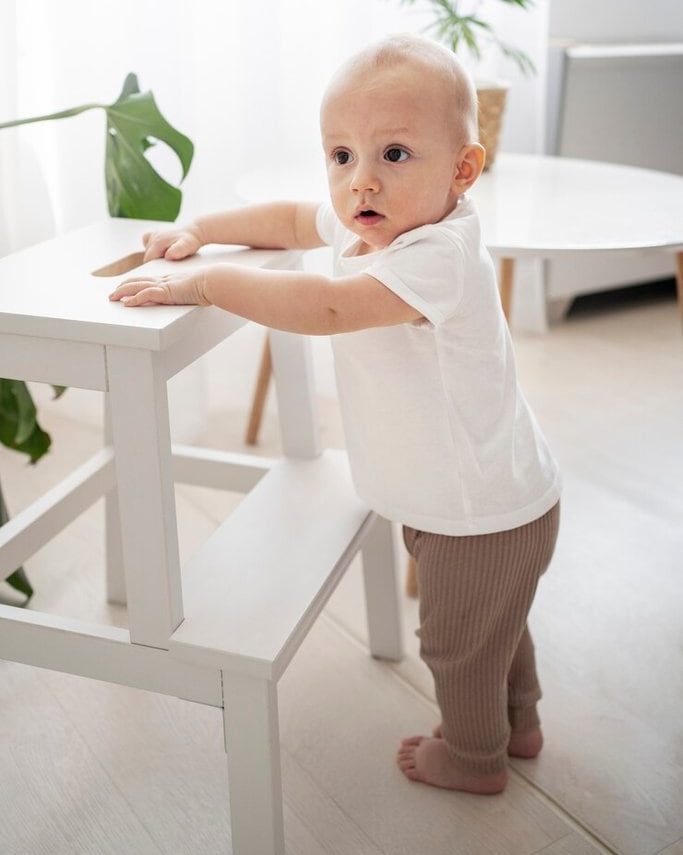
Most babies are ready for a high chair between four to six months, often closer to the six-month mark. This milestone brings kitchen and table freedom for parents and encourages social development as the baby joins family meals. Look for signs like sitting without support and starting solid foods to ensure your baby is ready for this step. Here’s what you need to know.
High Chair Benefits
The advantages of using a high chair extend to both babies and parents. It allows parents to be hands-free during meals, facilitating easier eating and assistance with other children. Additionally, the baby gains a front-row seat to family interactions at the table, promoting social and language development.

Your baby is ready for a high chair when they can sit upright without support, displaying good stability and control with minimal bobbing. Holding their head up is a crucial skill. While high chair manufacturers often recommend waiting until a baby is six months old, it’s essential to ensure your baby is individually prepared. Each child develops at their own pace and you shouldn’t rush it.
Introducing Your Baby to the High Chair
Once your baby can sit upright, consider introducing them to the high chair. A trial period allows them to acclimate to their new throne, making the transition to solid foods smoother. Offering a plate, cup, and spoon for play during this ‘test drive’ can alleviate any reservations.
For those who relish being part of mealtime social interactions, position the high chair strategically to ensure your baby has a clear view of you without reaching anything on the table. Additionally, make sure they can’t kick the table with their legs, preventing accidental toppling.
Choose the Right Product
Selecting the perfect high chair for your family involves considering key factors such as cleaning ease, durability, safety features, size for limited spaces, portability, wheel stability, and versatility. Opt for removable, washable covers and designs that minimize crumb accumulation. Prioritize safety with well-secured straps and a five-point harness.

For added convenience, choose foldable or travel high chairs for storage and portability. Ensure wheel stability by checking the locking mechanism. After purchase, maintain a record of the make and model and consider registering it for recall notifications.
Ensuring Safety for Your Little Angel
Are you transitioning your baby to a high chair? Prioritize safety with these key tips. You should secure your baby with safety straps, inspect the chair before use, lock the folding mechanism if applicable, and ensure stability to prevent tipping.
Keep the chair within your sight and never leave babies unattended or let them play with the chair. It’s not only essential for your child to feel comfortable in the high chair, but anyone supervising meals should also be familiar with its operation.